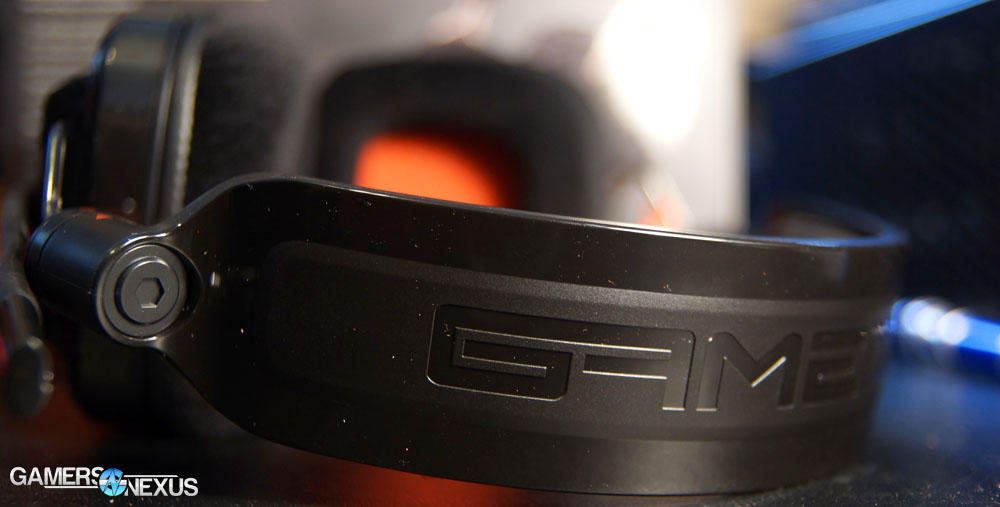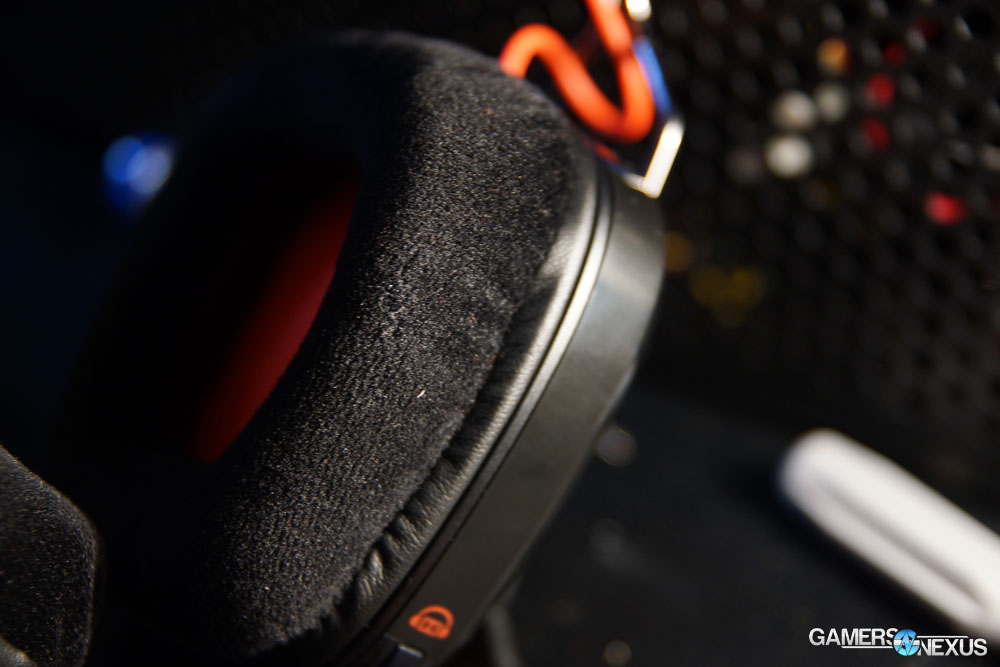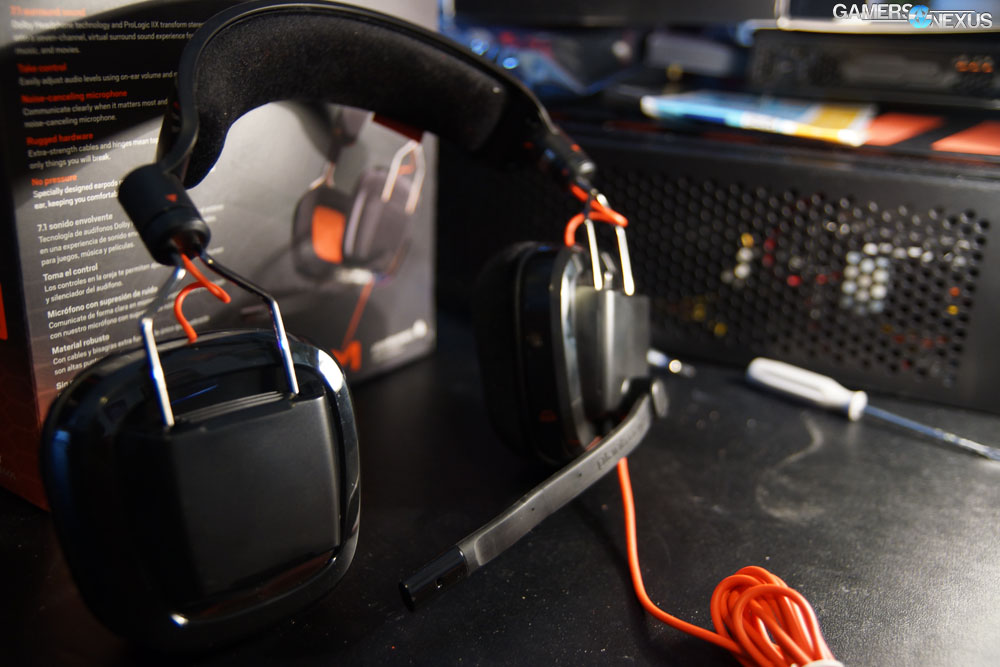We've been recommending Plantronics' GameCom 780 headset alongside our PC builds for a few years now, generally calling it the "best value for gamers." The 780 has fluctuated between the $50 and $80 price range, and at either end of that spectrum, it has always dominated as a high-endurance, high-performing solution for gaming audio and input. Our original review 780 is still functional, and that's after nearly two years of constant use -- the longest time I've ever had a headset last.
Plantronics recently contacted us about a GameCom 788 refresher of the original 780. There haven't been any changes to the audio drivers and underlying audio tech, so it's all aesthetics and marketing. The 788 ships alongside updated Windows 8/8.1 compatibility, joined by most of Plantronics' other audio products.
In this review and hands-on with Plantronics' GameCom 788, we look at the headset's sound quality, build quality, comfort, and usefulness in gaming.
GameCom 788 Video Review / Hands-On
GameCom 788 / 780 Specs
| Surround | Software for Dolby Headphone Technologies 7.1 channels |
| On-Ear Controls | Dolby Surround switch Volume wheel Mic mute |
| Drivers | 40mm |
| Freq. Response | 20Hz - 20kHz |
| Mic. Freq. Response | 100Hz - 8kHz |
| Cable Length | 6.5ft/2m |
| Interface | USB |
| Compatibility | Windows / Mac |
| Warranty | 1-year limited |
| MSRP | $80 |
Looking at the GameCom 788, those familiar with the 780 may notice that there aren't any actual changes to the build specification. From what Plantronics has told us, all changes are to the coloring of the inner ear-cup fabric, the cabling, and the headband. Other changes include expanded driver support for Windows 8/8.1, which has been extended to the original 780 and other Plantronics products. The takeaway here is that Plantronics is using its driver update as an opportunity to issue a refresher headset, meaning it's primarily a product being delivered for strategic marketing reasons. As a "refresh" often is. That doesn't make it bad, it just means that owners of the existing GameCom 780 shouldn't be purchasing the new 788. Use what you've got until it breaks.
The 788 brands a giant "7.1" wherever possible for its marketing approach, boasting digital surround broadcasting across its two 40mm drivers (one in each ear, to clarify). As with most modern gaming headsets, 7.1 sound is generally simulated from a stereo or 5.1 setup, using virtual / digital positioning to artificially position sounds spatially in a fashion that mirrors a 7.1 setup. Even though it's not using 7 speakers in the ear cup, digital positioning done properly can trick most users well enough for immersive gaming experiences.
The advantage of surround setups in competitive gaming is pretty straight forward. Let's take Battlefield: When there's a chopper overhead, a tank behind, infantry above-and-left on some stairs, a surround sound headset can aid the user in precisely locating the source of the audio. Using something high-end, like SteelSeries' Siberia Elite and impending Turtle Beach DTS products, it's further possible to determine distance (left-right depth) and location with impressive accuracy.
A true stereo setup will just give you left and right, which only goes so far in competition; the ability to pinpoint sound origin in 3-dimensional space can be a determining factor in survival. It also just adds to the experience and immersion, which is likely what the vast majority of headset purchasers are interested in.
GameCom 788 Audio Quality
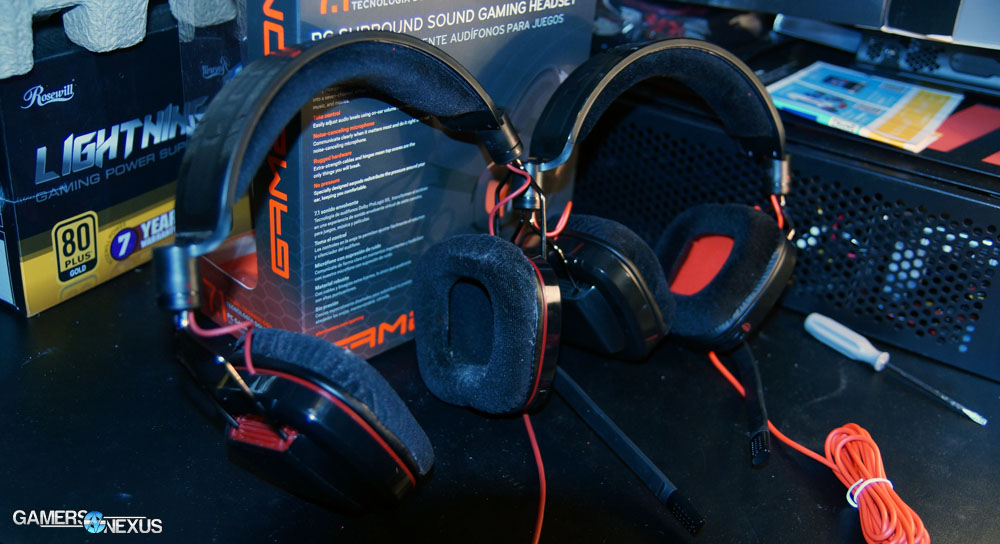 GameCom 780 (left) vs. 788 (right)
GameCom 780 (left) vs. 788 (right)
Plantronics' GameCom 788 sees the continuation of the 780's Dolby Headphone Technologies integration, a surround technique that's activated by a hardware toggle. The Dolby surround feature tends to make the wearer feel as if the audio is flanking from all sides -- which is a cool concept for music (think: auditorium) -- but tends to feel echo-y and ruins any chance of spatial awareness in games. Speaking strictly to music, enabling Dolby's technology creates a more resonant and deep kickdrum / bass, making the ear phone feel more "full" with sound. The unfortunate side effect is some loss of highs (cymbals get lost; higher screams lose some of their grit and friction). More complex prog songs feel like too much "noise" in general with the spreading done by Dolby Headphone Technologies; this is especially true if the artist differentiates tracking between the left and right ear, since Dolby's tech just spreads it through all channels somewhat equally. Hip-hop does a bit better with this tech, especially music where the artists have a deeper voice, though I'm still unsure as to whether I like the altered sound. The choice ultimately becomes a tradeoff between different types of sound.
For most use case scenarios, I found it preferable to disable the Dolby technology. In testing Dolby's Headphone Technologies, I created a demo audio track with only the right ear filled -- the left did not output sound, though it was recorded in stereo. Disabling the tech meant that I only heard the audio in the right ear; enabling it actually distributed the audio equally through both ears, which I think speaks to why the technology is undesirable in a lot of use cases. Especially games where precision sound is an important factor.
The native, un-Dolby-ed sound is some of the best I've heard on comparably-priced headsets. Positional audio is accurate to games that support it. The headset seems to have a tendency to "flatten" music a little bit, meaning that all the instruments sound about the same volume (something my high-end monitoring speakers don't exhibit), but that's not a huge downside in gaming. Explosions are boom-y and resonant, as they should be.
Output on the 788 feels very close to the head and is delivered fairly centrally to the ear -- there's certainly no "five rows back" simulation going on here. Some higher-end headsets we've used are capable of adding more depth to the audio (especially when using DTS technology), to the point of competing with true surround speaker setups and the depth inherent in physical distance from the listener.
Comfort & Build Quality
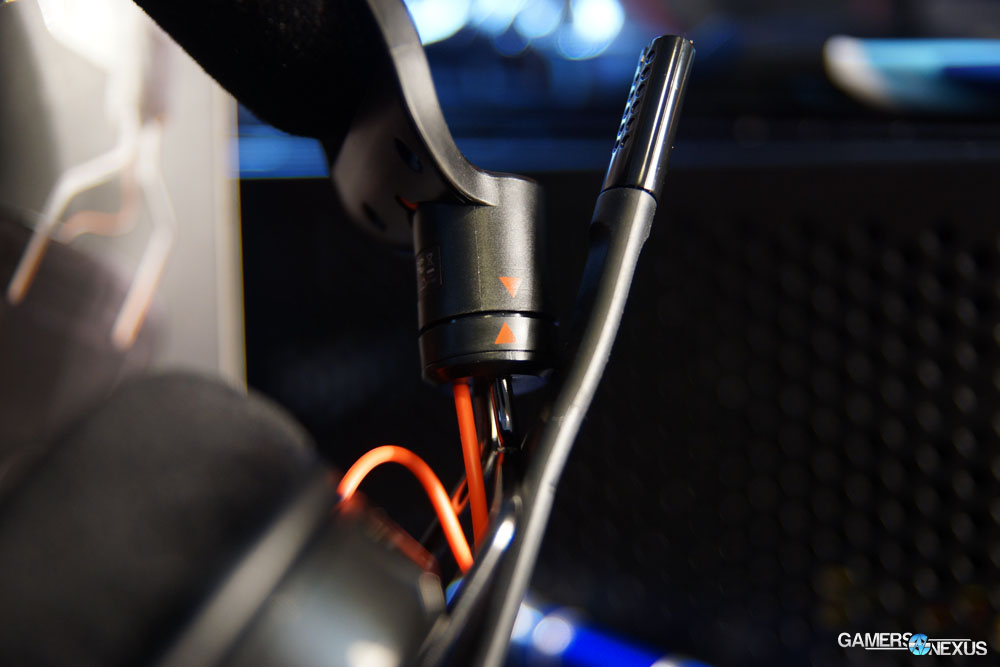 The metal skeleton makes for high durability (and fewer things to break).
The metal skeleton makes for high durability (and fewer things to break).
The 788 has a snug fit, but feels a bit tight until adequately worn-in. With enough use, the headset eventually loosens up to fat heads (or fat hair) without losing its firm grip around the ears. The ear cups have a large square 'cubby' that ensures no awkward pressure on the ear itself. Plantronics' headband is comfortable and remains relatively unnoticed during use. As with the original 780, the 788 has a rubberized material infused in its headband that allows for high flexibility and better durability.
Similar to what most other major headset brands do, the ear cups are mounted upon an axis to allow 90-degree rotation. This will primarily improve durability when being handled with less care, but also enables users who like the headset resting around the neck.
The headset has a few sliders and buttons on the left ear phone: mic mute/unmute, volume, and Dolby surround. I find it easier to use the buttons on my keyboard, though they'd be appreciated if none were present on other peripherals. This same ear phone supports the swiveling, bendy microphone. The mic has just enough give for positioning closer to (or further from) the user's mouth. I've found mic quality to be relatively high (it was used for our recent RAM review, if you're curious) when compared to competing products.
Final Thoughts
Plantronics has returned with its GameCom 780 in new flair and hasn't messed with a working formula. The 788 is effectively the same as the 780 for all audio purposes, so if you haven't yet bought the GameCom 780 and need a sub-$80 headset, the 788 is worth a consideration. In the meantime, until the 780 is out of stock and ceases production, it can be had for $60 and is one of the best values on the headset market at the moment.
If you're looking for something that has reasonable versatility, but retains a focus on competitive gaming and positional audio -- and you want it to be under $80 -- the GameCom 788 would be my go-to choice.
- Steve "Lelldorianx" Burke.
